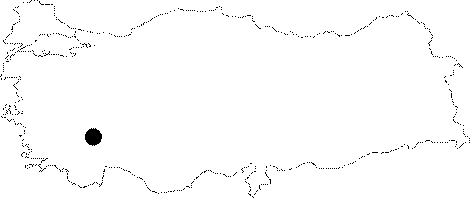|
|
||||
|
|
||||
|
Insuyu |
||||
|
For cave maps and drawings please click on the picture... |
For photographs please click on the photo... |
|||
|
 |
|||
|
Type: |
Horizontal Cave | |||
|
Altitude: |
1205 m | |||
|
Depth: |
m | |||
|
Length: |
700 m | |||
|
Region: |
Mediterranean | |||
|
Province: |
Burdur | |||
|
District: |
Merkez | |||
|
Village: |
||||
|
|
||||
 |
||||
| Location: It is 13 km far from the city center to the east of the Cine Plain; southeast of Burdur. It can be easily reached through a 900 m connection road from the Burdur-Antalya motorway. It is the first show cave in Turkey. |
| Structural Properties and formation : Within the Mesozoic limestones; it probably combines with the Kizilin Cave; which is 2 km further. The small underground creek outflowing from the cave contains mineral water. There are small and big lakes; one of them with a size of 75x40 m. Explored by MAD in 1965; it was then opened for touristic activities by the governorship. During the exploration carried out in 1965; it was found that it is 2000 m long and it ends up with a big lake. However; the level of lake was lowered due to excessive withdrawal of water for the irrigation of the fields in the vicinity; exposing new galleries. During the second exploration carried out in 1999; the lake was dived; and it was found that there is a very large hall ahead of the branch during the first diving at 8 m. Then it was dived to 22 m; and a large hall was found; which is approximately 30x30 m; and 15 m high. It has two separate entrances; and the ceiling and bottom are covered by a very thick layer of silt. |
| Research History: It was discovered by T. Aygen in 1952; and explored subsequently until 1961 when it was introduced to the public through an interview published in Hürriyet between 29-31 May 1961. After MAD was established in 1964; activities to use it as a show cave was initiated; and finally it became a show cave in 1966. The Insuyu Diving Group of MAD carried out a Training and Research Diving Activity in 1999. Also; as a result of exploring new branches by BUMAK and MAD diving activity; it was reported in Delta 7 that it is likely that it combines with the Kizilin Cave [Delta 7 2005d:71-74]. |
| Findings: Several species of bats inhabit the cave (Rhinolophus euryale; Rhinolophus meheyli; Rhinolophus blasii; Myotis myotis; Myotis capaccinii; Miniopterus schreibersii) [Benda-Horacek 1998:265; 266; 267; 269; 282; 299]. Also; 200-300 hibernating Myotis capaccinii and 50 Miniopterus schreibersii were found [Spitzenberger 1973:28]. There are also other forms of life called Millipides and Troglobitic isopod resembling very small woodlouse [Basar 1968a:19 - Basar 1977:24]. |
